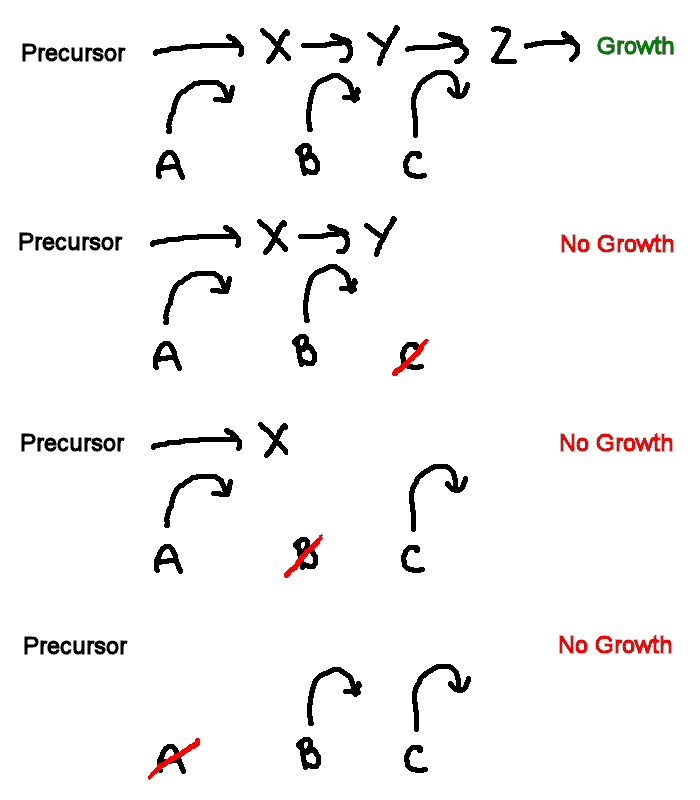
Inference of a haploid biosynthetic pathway

X, Y and Z
are metabolites in a biochemical
pathway;
A, B, & C are enzymes that convert a precursor
metabolite to X, X to Y, and Y
to Z, respectively.
A fully functional pathway
permits growth.
Mutant strains are
unable to grow:
Some enzymatic
block
prevents synthesis of some metabolite from its precursor
Growth occurs if any downstream
metabolite is added
(the mutant is "cured").
If the
addition of a metabolite enables growth of a mutant strain,
then the block occurs before
synthesis of that metabolite,
or, the metabolite occurs in the pathway after
the block.
Consider seven arg-
mutant strains of Neurospora
that cannot grow on minimal medium:
some of them can grow when supplied
with the amino acids arginine, citrulline,
and/or ornithine
arg-4
mutant strain grows with addition of any of arg,
cit, or orn:
block
must precede all three,
=>
block affects metabolism of
precursor substance
arg-1 mutant strain has a specific
requirement for arginine:
block
must occur immediately before arg,
after both orn &
cit
=>
arg
is last product in pathway
arg-2 mutant strain is 'cured' by
citrulline, and not by ornithine:
block
must occur before cit, and after orn
block
prevents conversion of orn
to cit
=>
cit occurs after orn
Arginine biosynthesis as inferred from preceding data [an alternative presentation]:

Homework: Are arg4,
arg2, and arg1 different alleles of the same
gene, arg? Explain why or why not?